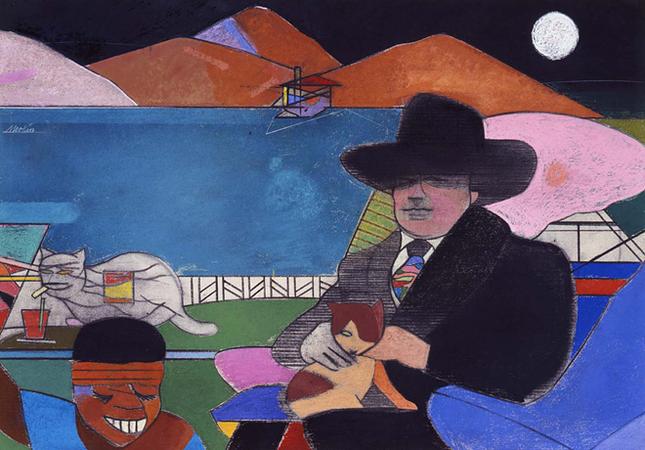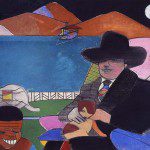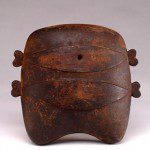Museum Guide: Two to View
By • June 27, 2014 0 906

“Speculative Forms” at the Hirshhorn
Speculative realism is a philosophical notion that emphasizes equal relationships among subject, object and space. In the realm of visual art, it highlights the importance of installation and the viewer’s eye in relation to the object.
For instance, the iron sculpture “Okame” (1956), by Japanese American artist Isamu Noguchi (1904-1988), is a vaguely organic form, rust-colored with a single, slanted eye and what may be four ears and a mouth. The title means “bystander” in Japanese, and as one moves around the small work there is a prevailing sense that the audience is not the only participating viewer; it is a work that looks back. Noguchi is manipulating the notion of the work itself observing, even as it is observed by the viewer.
Drawn from the Hirshhorn’s private collection, “Speculative Forms” reconsiders the historical development of sculpture since the early twentieth century and the ongoing critique of the autonomy of the object. Ranging from the well known to the rarely exhibited, the selected works challenge the modernist notion that sculptures exist in isolation from their surroundings.
Including more than fifty works, this two-floor exhibition – while proceeding through Surrealism, Constructivism, Assemblage, Op and Kinetic Art, Minimalism and Post-Minimalism – collapses conventional art historical divisions such as figurative versus abstract, still versus kinetic, representational versus simplified geometric, interior versus exterior. The works oscillate between these dichotomies, turning one’s preconceived notions of sculpture inside out and raising intriguing questions about the potential and limits of the perception of objects and the larger world.
“Modern American Realism” at the Smithsonian American Art Museum
Sara Roby (1907-1986) was a beloved art collector who established a foundation in the 1950s to encourage figurative artists when Abstract Expressionism was at peak popularity. Through her foundation, she collected over 150 paintings, drawings and sculptures by the country’s leading figurative artists, including Edward Hopper, Will Barnet, Isabel Bishop, Paul Cadmus, Arthur Dove, Nancy Grossman, Wolf Kahn, Yasuo Kuniyoshi, Jacob Lawrence, Reginald Marsh, Ben Shahn and Honoré Sharrer.
Acquired by the Smithsonian American Art Museum in 1984 from the American Federation of Arts (formerly administered by the Whitney Museum), the collection has been one of Washington’s hidden gems of the visual arts for thirty years.
“Modern American Realism: The Sara Roby Foundation Collection,” currently on view at the museum, presents some of the most treasured artworks from this now permanent collection, featuring seventy paintings and sculptures from the 1910s to the 1980s. Selected by chief curator Virginia Mecklenburg, the works encompass a range of what can broadly be called modern realism, from sociopolitical to psychological, from satirical to surrealist. The resulting exhibition captures both the optimism and the apprehension of the years following the Second World War, from the poignantly human to the whimsical to the complex and enigmatic.
Roby gave essential support to realism at a time when critics celebrated abstraction that bore little resemblance to the natural world. She recognized that modern life allowed for many kinds of realism. This collection ensures that her legacy, as well as the legacies of the many great artists she championed, will not be forgotten.
“Speculative Forms” opened June 16 at the Hirshhorn Museum (the closing date will be announced). “Modern American Realism” will be on view at the Smithsonian American Art Museum through Aug. 17.
- Richard Merkin’s “Gertrude and George.” | Ari Post
- Ari Post



